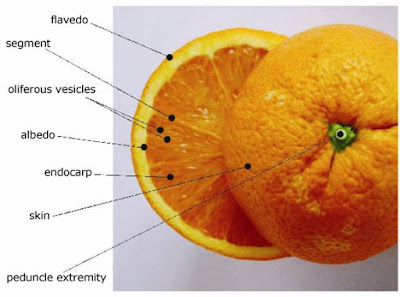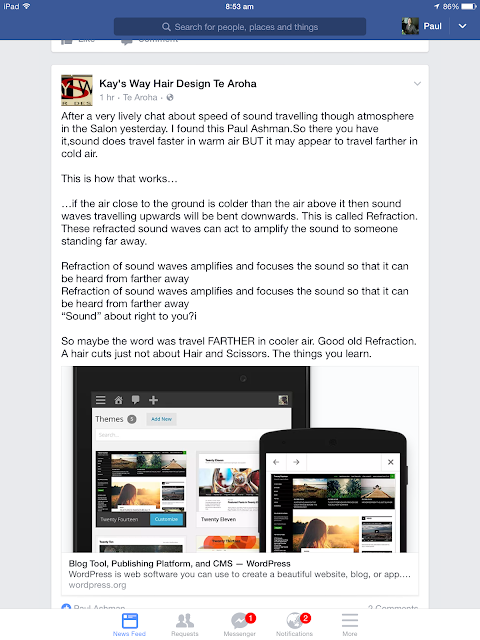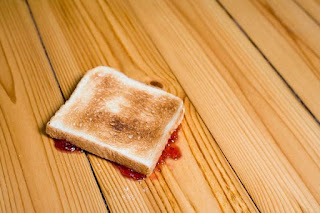Gather and Interpret Data...
I was in a workshop and one of the teachers spoke about
still wanting to get the difference between the ‘gather’ and the ‘interpret’ of
this capability. We sometimes call this “I see, I think” although we do add “I
wonder” on the end! I wrote this up as a word doc with pretty pictures and all but thought the test might be interesting for others :-)
To me, the ‘interpret’ is about students starting to think about
their observations, drawing on their prior knowledge and science knowledge to
make sense of what they can see. Students might watch an experiment, then start
to make sense of it à
this might lead to some more questions, or trying out the experiment a
different way to see if the results are the same or even challenge their
thinking –could there be a different explanation for what we’ve seen? In the
“Use Evidence” capability, the explanation is deeper and is also based on the
evidence seen (whilst inferences are where children can think about what might
be happening without any proof). Children are learning about explanations and
how to build them, test them and challenge them. From this, children will
understand better scientific explanations when they come across them on the web
or in a book –do we think the explanation is sound or robust? Building an
awareness of what an explanation is helps them interpret them!
An example of this process could be illustrated by a child observing
a soda water and raisins experiment. I asked her, as raisins bobbed up and
down, what could she see. She talked about seeing raisins on the bottom of the
glass, lots of bubbles going up as well as two raisins ‘jumping up and down’. I
then asked her “So what do you think is going on?” Her answer was that the
raisins were jumping up, getting a breath of air and then sinking back down
–just like how she would when she’s in the swimming pool. Besides being a
lovely answer, this is a great example of an inference. She tagged some prior
knowledge onto what she had observed. However, this could never be the
explanation –there’s no evidence that raisins breathe! As it was, we did cut
open a raisin to have a look inside but couldn’t find any lungs –so she decided
raisins must have gills! For her explanation as to why the raisins were going
up and down, we would need clear evidence of raisins needing to breathe –how
come some raisins never came up to the surface? Other children inferred it was
the bubbles that caused the raisins to go up. It’s an inference until we can
prove it.
“Science
knowledge is based on data derived from direct, or indirect, observations of
the natural physical world and often includes measuring something. An inference
is a conclusion you draw from observations – the meaning you make from
observations. Understanding the difference is an important step towards being
scientifically literate.”
Science
knowledge is based on data derived from direct, or indirect,
observations of the natural physical world. We gather data by using our
senses: sight, hearing, touch, taste, smell - to make observations. Making
careful observations often includes measuring something. Observations are
influenced by what you already know.
This nicely morphs into the Use
Evidence capability about making an explanation. It’s also a good example
of students critiquing
|
Interpreting data
involves making meaning from observations. A conclusion you draw from
observations is called an inference. To help students differentiate
between observation and inference, ask:
Is it
something we can see, hear, smell, touch, or taste? Is it measurable?
What did
you see? (observation);
What might that mean? (inference).
To try and
ensure their explanations are robust, i.e. that their inferences
are valid, scientists do a number of different things, for example:
They ask questions
like: “Could there be another explanation for this data?”
They might
collect more data, perhaps using a different method. They might also test
alternative explanations.
They
communicate and debate their ideas with other scientists.
Another example of this could be looking at bird features –their beaks
and feet… What do children notice about the different beaks of birds? Could
they go out and take some photos (or sketch some of the beaks they can see?).
It might be that you use photos on the projector of different birds for
children to sketch.
Next children might write down some thinking –why might a duck’s foot
be webbed? Why would that be helpful? Children might think about scuba divers
with their flippers and how well they can swim so perhaps the webbed feet help
the duck swim better (and some children might have even seen ducks swimming).
These are inferences because we’re simply making sense of our observations
without the need for ‘proof’. Children, as they get older, might like to put a
‘because’ in their sentence too: I think the webbed foot is so the duck can
swim better because scuba divers wear them to help them swim stronger
and faster. These inferences are the beginning of an explanation although
we’ll need data to prove what we’re thinking… The inferences might be wrong and
so students might challenge their thinking: I think the kiwi beak is long so
he can eat berries that are high up because he’s so small. I’ve seen lots of
birds eating the berries in our tree and he wouldn’t be able to reach them. This
is an inference based on what the child has seen as well as thinking about the
beak. Other children might challenge this inference –do kiwi eat berries
like other birds? I thought kiwi eat bugs –I saw it on YouTube! The student
might then watch a video of a kiwi searching for food, or read some information
about what kiwi might eat and then change their mind… Actually kiwi don’t
eat berries on the trees. He uses his beak to push through all the dead leaves
on the forest floor looking for bugs to eat. Because his beak is long he can
push in a lot deeper. And you can see that this is becoming an explanation:
after having seen some footage of kiwi or reading up on the bird, the child now
has evidence to back up their explanation! It’s no longer simply an
inference of what might be what’s going on based on their own thinking
but they have evidence!
Bird feature
|
What we think they
might use the feature for
|
What we saw on the
video
|
http://etc.usf.edu/
|
I think the feet
are for swimming like a scuba diver
|
Yes the duck used
its webbed feet to go faster –he spread out his feet underwater like flippers
|
 www.aucklandmuseum.com www.aucklandmuseum.com
|
I think the beak is
long and pointy so it can pick berries that are too high up to reach
|
The beak is
actually so he can search for grubs and worms in the leaf litter
|
Sometimes though there might be more than one
explanation… I like the panda bear skull because you can look at the skull and
infer it’s a carnivorous animal. You might even decide it could be a grizzly
bear with those sharp teeth… So my inference is I think it’s a carnivorous
animal because it has those sharp teeth in the front. To explain, I
may look at some other carnivorous animals, compare their skulls and decide Yes,
from the evidence of other skulls, I think this is a meat-eating animal. It has
similar teeth at the front and back. From looking at the two skulls, they seem
almost identical so I’m thinking this is a bear skull too. Although my
explanation is built on all the evidence, in this case, it’s a panda skull
which eats bamboo… I might want to do a bit more research, questioning so
why does it have teeth like that? Did it used to eat meat?
Panda skull
http://www.educationalbiofacts.com
|
Grizzly Bear skull
|
What has changed?
|
How has it changed?
|
What do we think caused the change?
|
What is the effect of the change?
|
The tree
|
It has grown.
|
Time and conditions that allow growth
|
There is a shady place in the playground.
|
Noticing changes is definitely an observation, how it has
changed could be an observation or an inference whilst the third column is an
inference with students thinking about their observations whilst the last
column could be an observation or an inference. As children infer, it might
lead onto further questions and investigations.
It can be really effective to think a bit more about why
we are teaching this capability? Why do we want to develop this ‘citizenship
idea’? Although it looks like the capability of Gather and Interpret Data is
all about processes and skills, it’s really part of a disposition (like the Key
Competencies). As these children get older, how would this capability help
them? Would it be good for them to learn how to observe closely, about what an
inference is, and what makes a good explanation? Would you use these
capabilities as a ‘grown up’?
Hope this helps!


























